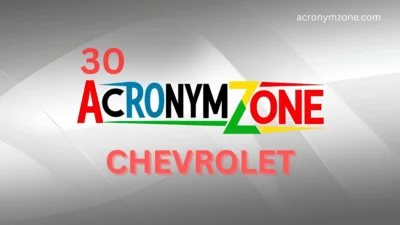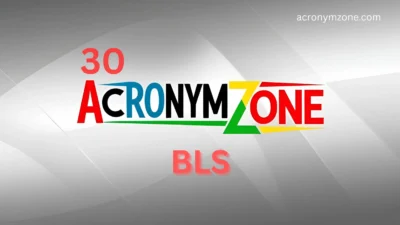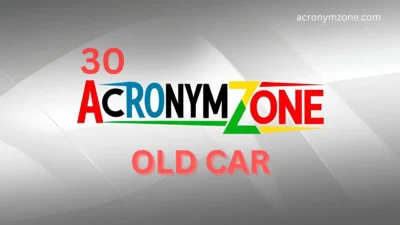The world is becoming more inclusive—and the language we use reflects that. One phrase you’ve likely seen across workplaces, organizations, and institutions is the “DEIA acronym.” But what does DEIA really mean, and why is it so essential in conversations today?
At its core, DEIA stands for:
- Diversity
- Equity
- Inclusion
- Accessibility
Together, these values form the foundation of environments that are fair, welcoming, and supportive of every identity and experience. The DEIA acronym isn’t just a set of buzzwords—it reflects a commitment to recognizing differences, dismantling barriers, and ensuring that everyone has a seat at the table.
But sometimes, you need alternative words or acronyms that highlight a specific aspect of DEIA, depending on the tone, context, or audience. In this post, we’ll explore 30 alternatives to DEIA—what they emphasize, when to use them, and how to choose the right one.
🌍 What Does DEIA Really Stand For?
Let’s unpack each element:
- Diversity – The presence of differences (race, gender, age, background, etc.)
- Equity – Fair treatment and access to opportunities
- Inclusion – Ensuring people feel welcomed, valued, and respected
- Accessibility – Making spaces, tools, and information usable by everyone, including those with disabilities
Together, these pillars push organizations beyond “representation” toward belonging and systemic change.
💡 30 Acronym-Inspired Synonyms for DEIA (with Usage Tips)
Whether you’re writing an inclusive mission statement, designing a social campaign, or framing a company initiative, here are 30 thoughtful alternatives to DEIA:
1. JEDI – Justice, Equity, Diversity, Inclusion
Use when you want to center justice explicitly.
“The company launched a JEDI initiative to examine systemic inequity.”
2. IDEA – Inclusion, Diversity, Equity, Accessibility
Use for educational or nonprofit settings.
“Our school follows the IDEA framework for inclusive teaching.”
3. BEI – Belonging, Equity, Inclusion
Use when focusing on emotional and cultural belonging.
“BEI workshops helped employees feel heard.”
4. DIBs – Diversity, Inclusion, Belonging
Use for friendly or internal culture-building.
“We held monthly DIBs meetings to strengthen team culture.”
5. DEIB – Diversity, Equity, Inclusion, Belonging
Use when adding emotional connection to standard DEI.
“The DEIB strategy highlighted employee voices.”
6. EIDA – Equity, Inclusion, Diversity, Accessibility
Use when emphasizing equity first.
“Our EIDA model begins with addressing systemic bias.”
7. BRIDGE – Belonging, Respect, Inclusion, Diversity, Growth, Equity
Use in community-building contexts.
“The BRIDGE team hosted monthly dialogue circles.”
8. CARED – Collaboration, Accessibility, Respect, Equity, Diversity
Use for healthcare or caregiving environments.
“We implement CARED values in patient interactions.”
9. LIVE – Listen, Include, Value, Empower
Use when your focus is interpersonal or motivational.
“LIVE training helped leaders become better allies.”
10. HUMAN – Honor, Understand, Motivate, Accept, Nurture
Use in well-being or culture-first initiatives.
“The HUMAN approach centers compassion in leadership.”
11. RISE – Respect, Inclusion, Support, Equity
Use in employee engagement or coaching.
“Our team adopted the RISE framework to improve belonging.”
12. SAFE – Support, Access, Fairness, Empowerment
Use when safety or trust is the goal.
“We want to create a SAFE space for everyone to thrive.”
13. CORE – Culture, Opportunity, Respect, Equity
Use when building foundational organizational values.
“CORE values guide every decision we make.”
14. DREAM – Diversity, Respect, Equity, Access, Mindfulness
Use for future-oriented or aspirational messaging.
“Our DREAM initiative envisions a more inclusive tomorrow.”
15. PRIDE – People, Respect, Inclusion, Diversity, Equity
Use in LGBTQIA+ programs or community work.
“We hosted a PRIDE panel to amplify queer voices.”
16. ALLY – Advocate, Listen, Learn, Yield
Use for allyship training and awareness.
“Becoming an ALLY means listening and taking a step back.”
17. EQUAL – Empower, Question, Understand, Act, Lead
Use in activism or leadership.
“The EQUAL framework promotes courageous leadership.”
18. UNITY – Understand, Nurture, Include, Trust, Yield
Use in team-building or restorative practices.
“UNITY circles helped us rebuild trust post-conflict.”
19. VOICE – Validate, Observe, Include, Connect, Empower
Use when elevating marginalized voices.
“VOICE programs ensure students feel seen and heard.”
20. SPARK – Support, Promote, Accept, Respect, Know
Use for awareness campaigns.
“SPARK workshops encourage dialogue and mutual respect.”
21. REAL – Respect, Empathy, Acceptance, Love
Use when emotional tone matters.
“The REAL mindset reshapes how we interact daily.”
22. TRUE – Trust, Respect, Understanding, Empathy
Use in mentorship or HR communications.
“We want TRUE connection across all teams.”
23. CARE – Compassion, Access, Respect, Equity
Use for social services or nonprofit work.
“Our CARE program supports underserved communities.”
24. SHARE – Support, Hear, Acknowledge, Respect, Empower
Use for community storytelling or DEI forums.
“The SHARE platform gave space for lived experiences.”
25. OPEN – Opportunity, Perspective, Empathy, Neutrality
Use in conflict resolution.
“Our goal is to stay OPEN to others’ truths.”
26. GLOW – Grow, Learn, Own, Welcome
Use for youth programs or personal development.
“GLOW workshops encouraged middle schoolers to speak up.”
27. HEAL – Honor, Empathize, Acknowledge, Listen
Use for trauma-informed care or recovery.
“The HEAL approach was key to rebuilding after harm.”
28. CURE – Compassion, Understanding, Respect, Equity
Use for medical or mental health settings.
“We practice CURE values in every patient interaction.”
29. ROOT – Respect, Openness, Opportunity, Trust
Use in cultural or DEI heritage programs.
“ROOT helped us reconnect with our shared values.”
30. VIBE – Value, Include, Build, Empower
Use for fun, informal, or creative initiatives.
“The VIBE team made DEI feel real, not corporate.”
🧭 How to Choose the Right DEIA Alternative
When choosing a DEIA synonym or variation, ask yourself:
- What’s your main focus? (Justice? Belonging? Access?)
- What’s the tone? (Formal, casual, community-driven?)
- Who’s your audience? (Employees? Students? Stakeholders?)
- What outcome do you want? (Awareness? Healing? Policy change?)
Some acronyms like JEDI or DEIB work best for formal DEI departments, while others like ALLY, LIVE, or VIBE shine in workshops, classrooms, or community spaces. Keep cultural sensitivity in mind—certain terms may carry unintended weight or historical connotations depending on the region or demographic.
✅ Conclusion
The DEIA acronym continues to guide organizations and communities toward more inclusive, equitable, and empowering environments. But words matter—and choosing the right synonym can reinforce your message, deepen engagement, and build trust.
Whether you’re working with DEIB, JEDI, CARE, or VOICE, the goal remains the same: to create spaces where everyone feels seen, valued, and included.
So go beyond buzzwords. Use language that matches your mission—and let your words do the work of change.




